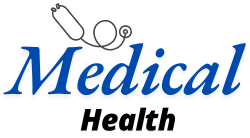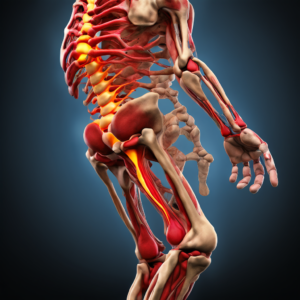Heart disease, it’s a mess of things that can go wrong with your ticker.
Kills a lot of people, around 17.9 million a year, they say. So, you gotta pay attention.
It ain’t one thing, it’s a whole bunch of troubles, like a bad storm. Can hit you slow or come at you full force.
Messes up everything, not just your heart, makes it hard to work, play, even breathe.
You got your coronary artery disease, that’s like rust in your pipes, blood can’t get through so good.
Gives you chest pain, angina they call it, or worse, a heart attack, where your heart yells for air.
Then there’s heart failure, that’s when the pump gets tired and can’t do its job, leaves you out of breath, tired, legs all swollen, ain’t pretty.
And the arrhythmias, that’s the heart going wild, too fast, too slow, all jerky, makes you dizzy, maybe you pass out, or worse. Not just numbers, that stuff is real.
It’s about blood flow, or lack of it, the heart’s not getting what it needs, the pipes are too narrow, that’s the coronary thing, starves the muscle, bad news all around.
Heart failure, the pump is weak, fluid builds up, you get all puffy and can’t breathe so good.
Arrhythmias, electrical mess, heart beats all over the place, not so efficient.
Each of these is like a domino falling, one leads to another, a whole cascade of heart trouble.
Risk factors, some you’re stuck with, like your age, or your folks’ bad genes.
But some you can handle, like high blood pressure, smoking, high cholesterol, getting fat, diabetes, and being a couch potato. You can change those, here is how it breaks down:
- Non-Modifiable Risk Factors
- Age, can’t do much about that, time moves on.
- Family history, blame your parents.
- Gender, you get what you get.
- Modifiable Risk Factors
- High blood pressure, can get that down.
- Smoking, put the damn thing out.
- High cholesterol, watch what you eat.
- Obesity, get your ass moving.
- Diabetes, need to be careful with that sweet tooth.
- Sedentary lifestyle, get off your butt.
Fighting heart disease is about choices.
A good diet, fruits, vegetables, whole grains, lean meat, good fats, like putting on armor.
Exercise, 150 minutes a week, walking, swimming, cycling, lifting things, keep the engine oiled.
No smoking, that’s just dumb, like pouring gas on a fire.
Keep your head cool with mindfulness, breathing, getting outside, find the calm in the storm.
Alcohol, go easy, too much is trouble, it’s about balance.
Small changes can make a big difference, here is the breakdown:
- Key Components of a Heart-Healthy Diet:
- Fruits and Vegetables: Good stuff, vitamins, all that.
- Whole Grains: Fiber, good for the heart.
- Lean Proteins: Fish, chicken, beans, better than the greasy stuff.
- Healthy Fats: Nuts, avocados, olive oil, good fats.
- Limit Processed Foods: That junk is not your friend, watch the salt and sugar.
- Portion Control: Don’t be a glutton, eat the right amount.
- Recommended Exercise:
- Aerobic Exercise: 150 minutes a week, not too crazy.
- Examples: brisk walks, jogs, swimming, cycling, get moving.
- Strength Training: Two or more days, lift some weights, build muscle.
- Examples: weights, push ups.
- Flexibility: Yoga, stretching, loosen up.
- Consistency: Don’t overdo it, be consistent.
- Aerobic Exercise: 150 minutes a week, not too crazy.
Know your numbers, blood pressure around 120/80 is good, higher, and that’s trouble.
Cholesterol, bad stuff should be low, good stuff should be high, totals under 200. Blood sugar, fasting should be under 100, higher means diabetes is coming around.
EKG, measures the heart’s electrical activity, looking for problems.
Checkups, like maintenance, catch problems early, here’s what to keep in mind:
| Blood Pressure Level | Systolic mmHg | Diastolic mmHg | Interpretation |
|---|---|---|---|
| Normal | Less than 120 | Less than 80 | Good numbers, keep it up. |
| Elevated | 120-129 | Less than 80 | Not so good, time to change. |
| Stage 1 Hypertension | 130-139 | 80-89 | High, need to get it checked and maybe get some help. |
| Stage 2 Hypertension | 140 or higher | 90 or higher | Bad stuff, need some serious help |
| Hypertensive Crisis | Higher than 180 | Higher than 120 | Medical emergency, get help now. |
| Cholesterol Type | Desirable Level | High Level | Impact on Heart Health |
| :——————– | :——————————————— | :—————————————– | :————————————————————————– |
| Total Cholesterol | Less than 200 mg/dL | 240 mg/dL or higher | High levels mean trouble. |
| LDL Cholesterol | Less than 100 mg/dL | 160 mg/dL or higher | High levels can give you heart problems. |
| HDL Cholesterol | 60 mg/dL or higher | Less than 40 mg/dL | High levels good, low levels are a risk. |
| Test | Normal Range Fasting | Prediabetes Range Fasting | Diabetes Range Fasting |
| :———————— | :——————————- | :————————- | :———————– |
| Fasting Blood Glucose | Less than 100 mg/dL | 100-125 mg/dL | 126 mg/dL or higher |
| A1C Average Blood Sugar | Less than 5.7% | 5.7% – 6.4% | 6.5% or higher |
Then you got the fancy stuff, stress tests, get your heart pumping on a treadmill. Echocardiograms, sound waves to see your heart. CT and MRI, like a detailed photo of the heart. Doctors use those when they need a better look.
These things are good for catching problems early, for taking control, understanding your heart, making good choices, the time to act is now.
Understanding the Enemy: What is Heart Disease?
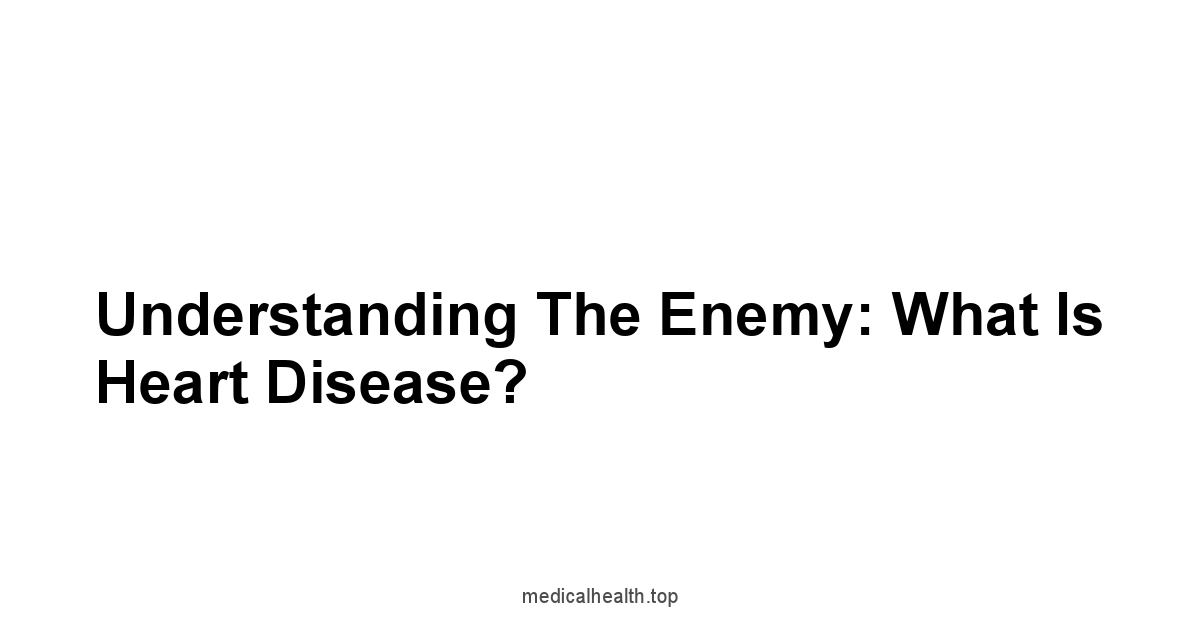
Heart disease, it’s a broad term, like a big net catching many troubles.
It’s not just one thing but a collection of conditions affecting the heart.
We need to understand this enemy to fight it, to know its faces and its ways.
It comes in many forms, each with its own set of problems, and each needing a different approach.
It’s the leading cause of death in many places, a silent killer, and that’s why we need to talk about it, look at it straight in the eye, and learn its weaknesses.
It can creep up on you, this thing, or it can hit hard and fast.
It affects not just your heart, but your whole life, your ability to work, to play, even to breathe.
We will look at the different types of heart disease, how it causes problems, and who is at risk.
Because knowing that is the first step to prevention, to early detection.
This is about taking back control, this is about making a stand.
The Different Forms: Coronary Artery Disease, Heart Failure, Arrhythmias
Coronary Artery Disease, or CAD, is like rust in the pipes.
The pipes here are your arteries, the ones that bring blood to your heart.
This rust is plaque, made of cholesterol and other junk that builds up and narrows those pipes, making it harder for blood to get through, like trying to run through mud.
It can lead to chest pain, what they call angina, or worse, a heart attack. The heart muscle cries out for blood.
Heart Failure is when the heart can’t pump blood like it should, a tired pump.
It doesn’t mean the heart stops, but it’s not working well enough to meet the body’s needs.
It can cause shortness of breath, fatigue, swollen legs.
It’s the heart saying, “I’m not strong enough.” Then there are Arrhythmias, these are the electrical problems, the heart’s rhythm goes off, like a drum beat gone wild, too fast, too slow, or irregular.
It can be a flutter, a skip, or something more serious, these rhythm issues can cause problems with blood flow.
It can lead to dizziness or even a sudden collapse.
- Coronary Artery Disease CAD:
- Characterized by the buildup of plaque in the arteries supplying blood to the heart.
- Can lead to angina chest pain and heart attacks.
- Often caused by high cholesterol, smoking, and high blood pressure.
- Heart Failure:
- The heart is unable to pump enough blood to meet the body’s needs.
- Symptoms include shortness of breath, fatigue, and swelling in the legs.
- Can result from various conditions, including CAD and high blood pressure.
- Arrhythmias:
- Irregular heart rhythms that can be too fast, too slow, or erratic.
- Can cause palpitations, dizziness, and fainting.
- May be triggered by various factors, including stress and electrolyte imbalances.
| Type of Heart Disease | Description | Key Symptoms |
|---|---|---|
| Coronary Artery Disease | Plaque buildup in arteries, reducing blood flow to the heart. | Chest pain, shortness of breath, heart attack. |
| Heart Failure | The heart’s inability to pump blood effectively. | Fatigue, shortness of breath, swelling in legs. |
| Arrhythmias | Irregular heart rhythms, including too fast, too slow, or erratic patterns. | Palpitations, dizziness, fainting. |
How it Wreaks Havoc: The Pathophysiology Explained Simply
It’s a mechanical problem, at its core.
Blood needs to flow smoothly, a constant delivery of oxygen and nutrients.
When things go wrong, it’s like a traffic jam, and when traffic jams, things break down.
With CAD, the narrowed arteries, that plaque build-up, it restricts the blood flow, the heart muscle doesn’t get enough oxygen and becomes starved.
This can lead to tissue damage, and eventually to a heart attack if the blood flow is completely blocked. It’s like a car engine running out of fuel.
In heart failure, the heart’s pumping action is weakened.
It struggles to push the blood through the body, which can lead to a backup of fluid in the lungs and other parts of the body.
This leads to swelling, fatigue, and shortness of breath, the body cries for what it needs.
Arrhythmias, they are more like electrical misfires.
The heart’s electrical signals that control its rhythm are disrupted, which can cause the heart to beat too fast, too slow, or irregularly.
This can reduce the heart’s ability to pump blood effectively and lead to complications. It’s like bad wiring in a machine.
- Coronary Artery Disease CAD Pathophysiology:
- Plaque buildup narrows arteries, restricting blood flow.
- Reduced oxygen supply to the heart muscle can cause angina.
- Complete blockage can lead to a heart attack and tissue damage.
- Heart Failure Pathophysiology:
- The heart weakens and can’t pump blood efficiently.
- Fluid can back up into the lungs and body, causing swelling and breathing difficulties.
- Can be caused by structural damage or chronic pressure overload.
- Arrhythmias Pathophysiology:
- Electrical signal disruption in the heart’s conduction system.
- Abnormal heart rhythms disrupt the pumping process.
- Can reduce the heart’s ability to efficiently pump blood throughout the body.
| Pathophysiological Process | Description | Consequence |
|---|---|---|
| Arterial Narrowing CAD | Plaque buildup restricts blood flow to the heart muscle. | Reduced oxygen supply, potential heart attack. |
| Weakened Pumping Heart Failure | Heart’s inability to effectively pump blood to the body. | Fluid buildup in lungs and body, fatigue, shortness of breath. |
| Electrical Disruption Arrhythmias | Heart’s electrical signals are disrupted, leading to irregular heartbeats. | Reduced heart pumping efficiency, dizziness, fainting. |
Who’s at Risk? Identifying Key Risk Factors
Risk factors are like the cards you are dealt, but they are not your destiny.
Some we can’t control, like our family history and age.
Age is a big one, the older you get, the more the risk goes up.
Then, there are the genes, if your parents had heart disease, you’re more likely to get it too.
But there are also the cards we can play, the ones we can control.
High blood pressure, smoking, high cholesterol, being overweight or obese, diabetes, and a sedentary lifestyle are like bad company, always leading you to trouble.
These are things that we can change, things we can influence, we can take the controls in our hands and change the course of the future.
It’s not about blaming, it’s about knowing, and acting.
- Non-Modifiable Risk Factors:
- Age: Risk increases with age.
- Family History: Genetic predisposition to heart disease.
- Gender: Men are generally at a higher risk than pre-menopausal women, but risk equalizes after menopause.
- Modifiable Risk Factors:
- High Blood Pressure: Damages blood vessels and strains the heart.
- Smoking: Damages blood vessels and increases plaque buildup.
- High Cholesterol: Contributes to plaque formation in arteries.
- Obesity: Increases strain on the heart and contributes to other risk factors.
- Diabetes: Increases the risk of blood vessel damage.
- Sedentary Lifestyle: Lack of physical activity increases heart disease risk.
| Risk Factor | Modifiable? | Impact on Heart Health |
|---|---|---|
| Age | No | Risk increases with age due to natural wear and tear on the heart and vessels. |
| Family History | No | Genetic predisposition increases risk, indicating inherited conditions. |
| High Blood Pressure | Yes | Damages arteries, increases workload on the heart, leading to enlargement. |
| Smoking | Yes | Damages blood vessels, increases plaque formation, causes blood clots. |
| High Cholesterol | Yes | Forms plaque in arteries, causing blockages and reducing blood flow. |
| Obesity | Yes | Increases strain on heart, can lead to other heart-related issues. |
| Diabetes | Yes | Damages blood vessels, leading to heart disease and stroke. |
| Sedentary Lifestyle | Yes | Increases risk of obesity, high cholesterol, and high blood pressure. |
The Power of Lifestyle: Your First Line of Defense
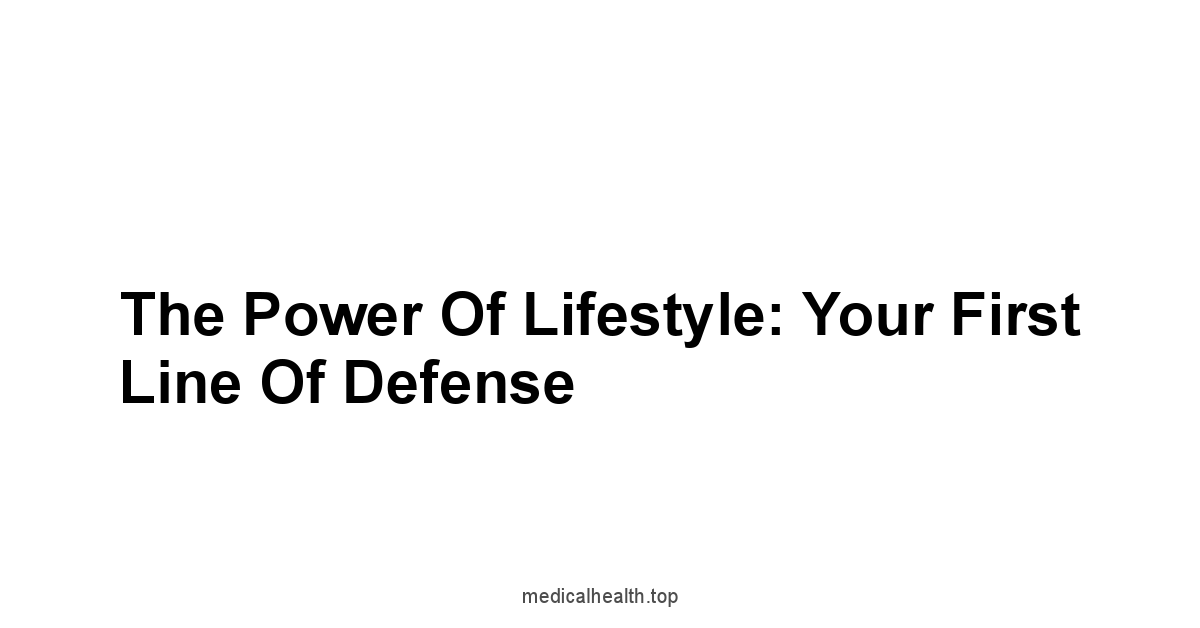
Lifestyle is the armor and the sword, the first line of defense against heart disease.
It’s about the choices we make every day, the food we eat, how much we move, if we smoke, if we take our time to breath.
It’s not about grand gestures but the small consistent actions we do every day.
It’s our own responsibility, no one can do it for us.
And these choices have the power to change the course of our health.
Think of your body like a machine. If you put the wrong fuel, it won’t run well. If you don’t give it exercise, it will rust.
The lifestyle is more powerful than any pill or procedure, it’s about taking charge.
We are going to look at diet, exercise, smoking, stress, and alcohol.
These are the battlegrounds where we can win or lose. It’s time to choose wisely.
The Food You Eat: A Diet to Strengthen Your Heart
Food, it’s fuel, not just a pleasure.
The right kind of food is like putting premium fuel in your car, the wrong kind is like filling it with mud.
A heart-healthy diet is about balance, not restriction.
It’s about nourishing your body with whole, unprocessed foods.
Think fruits and vegetables, the colours of a garden on your plate, full of vitamins and fibre.
Whole grains, not refined, the slow-burning fuel that keeps you going.
Lean proteins, like fish and poultry, not the heavy, fatty meats.
Healthy fats, the ones from nuts, seeds, and olive oil, not the ones that clog your arteries.
It is about limiting the bad stuff, things that will sabotage you, the processed foods, full of salt, sugar, and bad fats. These things are enemies to your heart. It’s about watching portions, not overdoing it.
It’s a marathon not a sprint, a way of living not a short term fix. This isn’t a diet to go on, but a diet to live by.
- Key Components of a Heart-Healthy Diet:
- Fruits and Vegetables: Rich in vitamins, minerals, and fiber.
- Whole Grains: Good source of fiber, promoting heart health.
- Lean Proteins: Fish, poultry, and beans are better choices.
- Healthy Fats: Found in nuts, seeds, avocados, and olive oil.
- Limit Processed Foods: Avoid high sodium, sugar, and unhealthy fats.
- Portion Control: Eating balanced portions is important to control weight.
| Food Group | Recommended Choices | Foods to Limit or Avoid |
|---|---|---|
| Fruits | Apples, berries, oranges, bananas, and all variety. | Canned fruits in syrup, processed fruit snacks. |
| Vegetables | Broccoli, carrots, spinach, tomatoes, all the variety | Fried vegetables, vegetables with high-salt sauces. |
| Grains | Whole wheat bread, brown rice, oatmeal. | White bread, white rice, refined cereals, sugary baked goods. |
| Proteins | Fish, chicken without skin, beans, lentils. | Fatty red meats, processed meats like bacon and sausage, fried food. |
| Fats | Avocado, nuts, seeds, olive oil. | Saturated and trans fats like those in butter, lard, fried snacks. |
Exercise: How Much is Enough? What Kind Should You Do?
Exercise is like oiling the engine, it keeps the body running smoothly.
It’s movement, not necessarily punishment, something to enjoy not to avoid.
It doesn’t have to be intense, but it does have to be regular.
Aim for at least 150 minutes of moderate-intensity exercise per week, that’s about 30 minutes most days of the week.
It can be broken down into smaller chunks of time, but consistency is the key.
Walking, jogging, swimming, cycling, these are all great ways to get your heart pumping.
Choose what you like, what you will do consistently.
Combine that with some strength training a few times a week, lifting weights or doing bodyweight exercises to build muscle.
It’s not about looking like a bodybuilder, it’s about building strength and endurance, keeping your heart in shape, like an athlete trains for a race.
Movement is medicine, it can heal both mind and body.
- Recommended Exercise:
- Aerobic Exercise: 150 minutes of moderate-intensity exercise per week.
- Examples: brisk walking, jogging, swimming, cycling.
- Strength Training: Two or more days per week.
- Examples: weightlifting, bodyweight exercises.
- Flexibility: Yoga or stretching, a few days each week.
- Consistency: Regular activity is more important than intensity.
- Aerobic Exercise: 150 minutes of moderate-intensity exercise per week.
- Types of Exercise:
- Aerobic Exercise: Improves cardiovascular health.
- Strength Training: Builds muscle strength and endurance.
- Flexibility: Increases range of motion and reduces the risk of injury.
| Type of Exercise | Frequency | Benefits |
|---|---|---|
| Aerobic Exercise | 30 min / 5 days per week | Improves cardiovascular health, increases endurance, helps with weight control. |
| Strength Training | 2-3 times / week | Builds muscle mass, increases strength, improves metabolism. |
| Flexibility | Few times per week | Increases range of motion, reduces risk of injury, promotes relaxation. |
Smoking and Your Heart: Why Quitting is Non-Negotiable
Smoking is like throwing gasoline on a fire, it does nothing but harm.
It damages your blood vessels, makes them narrow and stiff.
This limits the blood flow, which then increases the risk of heart disease, strokes, and other problems.
There is no safe level of smoking, any amount hurts your heart.
Quitting is the best thing you can do for your health, it’s non-negotiable. It might be hard, but it’s not impossible.
There are many resources and support systems to help you.
Talk to your doctor, join a support group, use nicotine replacement therapy, whatever works, do it.
It’s not just about adding years to your life, it’s about adding life to your years.
If you don’t smoke, do not start, and if you smoke, quit. Your heart will thank you.
- Harmful Effects of Smoking:
- Damages blood vessels.
- Increases blood pressure.
- Increases risk of plaque buildup in arteries.
- Raises risk of heart attack and stroke.
- Benefits of Quitting:
- Reduced risk of heart disease and stroke.
- Improved blood flow and lung function.
- Increased lifespan and overall health.
- Quitting Strategies:
- Talk to your doctor for advice and support.
- Consider nicotine replacement therapy.
- Join a support group.
- Seek counseling.
| Smoking Aspect | Harmful Effects | Benefits of Quitting |
|---|---|---|
| Blood Vessels | Damage, narrowing, and stiffening | Improved elasticity and blood flow |
| Blood Pressure | Increased blood pressure | Decreased blood pressure |
| Plaque | Increases buildup in arteries | Reduced risk of plaque formation |
| Heart | Increased risk of heart attack and stroke | Reduced risk of heart attack and stroke |
| Overall Health | Decreased lung function, increased cancer risk | Improved lung function, decreased cancer risk |
The Impact of Stress: Finding Your Calm in the Chaos
Stress, it’s a part of life, the fast moving world that we live in, it can be a silent killer.
It’s not just the big events, the work deadlines, the financial issues, but the daily grind that wears us down.
Chronic stress increases blood pressure, it makes the heart work harder, and that increases the risk of heart problems. It’s like living in a constant state of emergency.
Finding ways to manage stress is important, to live a balanced life, to find some peace.
Mindfulness, deep breathing, meditation, these are all ways to calm the mind.
Exercise is also a great stress reliever, getting the body moving to release the tension.
Spending time in nature, with family and friends, connecting to something outside yourself.

It’s not about avoiding stress but managing it so it does not manage you. It is about finding the eye in the storm.
- Effects of Stress on the Heart:
- Elevates blood pressure.
- Increases heart rate.
- Contributes to inflammation in the body.
- Increases risk of heart attack and stroke.
- Stress Management Techniques:
- Mindfulness and meditation.
- Deep breathing exercises.
- Regular physical activity.
- Spending time in nature.
- Connecting with loved ones.
| Stress Impact | Effect on the Body | Management Techniques |
|---|---|---|
| Blood Pressure | Elevated blood pressure and strain on arteries. | Regular exercise, relaxation techniques. |
| Heart Rate | Increased heart rate. | Mindfulness, meditation. |
| Inflammation | Increased inflammation in blood vessels. | Stress reduction activities, connecting with nature. |
| Overall Risk | Increased risk of heart disease and stroke. | Spending time with loved ones and community connections. |
Alcohol’s Role: Moderation is the Key
Alcohol, like many things, it’s not a clear cut good or bad.
Moderate drinking, that is one drink a day for women and up to two for men, might have some protective effects for the heart.
But too much alcohol can do the opposite, it can raise blood pressure, contribute to heart failure, and lead to irregular heart rhythms.
If you don’t drink, don’t start, and if you drink, keep it in moderation. It’s about balance, not extremes.
Think of alcohol as an occasional treat not a daily habit.
It’s about making informed decisions, and not about self-medication or something that controls you. Know the risks, know your limits, know yourself. Moderation is the key.
- Moderate Alcohol Consumption:
- Up to one drink a day for women.
- Up to two drinks a day for men.
- Risks of Excessive Alcohol:
- Elevated blood pressure.
- Increased risk of heart failure.
- Arrhythmias and irregular heart rhythms.
- Recommendations:
- If you don’t drink, don’t start.
- If you drink, keep it in moderation.
- Be aware of the risks associated with alcohol.
| Alcohol Aspect | Moderate Consumption | Excessive Consumption |
|---|---|---|
| Heart Health | Potential protective effects for some individuals | Increased risk of heart disease and heart failure |
| Blood Pressure | May have a mild impact or no impact | Can lead to elevated blood pressure |
| Heart Rhythm | Usually doesn’t affect heart rhythm | Can cause arrhythmias and irregular heartbeats |
| Overall Recommendation | If you drink, keep it in moderation, or do not drink if you do not already. | If you do not drink, do not start. Avoid excessive drinking |
Knowing Your Numbers: The Importance of Regular Checkups
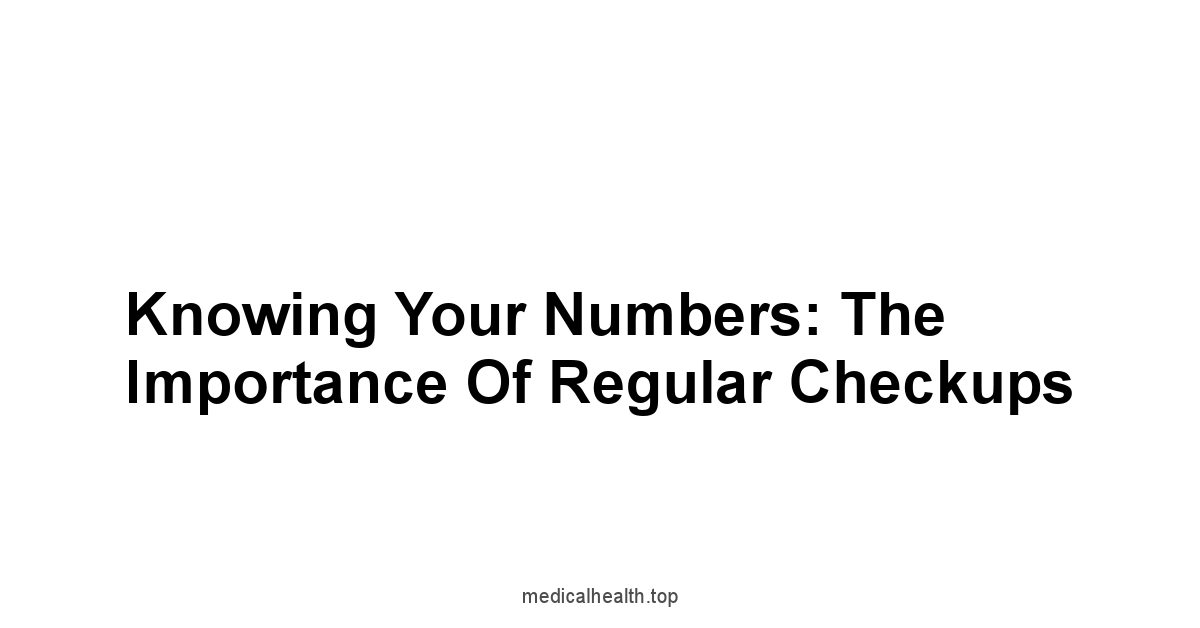
Knowing your numbers is like knowing the weather, it tells you what’s coming.
Blood pressure, cholesterol, blood sugar, these are the indicators of your heart health.
Ignoring them is like ignoring the storm clouds on the horizon.
Regular checkups are essential, they allow you to catch problems early, before they get out of hand.
These numbers are not meant to scare you but to inform you, to give you the power to act.
It’s like checking the oil in the car, making sure everything is running smoothly.
Don’t wait for symptoms, they are often late warnings. Be proactive, not reactive. Get your checkups.
Knowing your numbers is the first step to understanding your heart and taking care of it, just like a captain monitors the ship to avoid dangers.
Blood Pressure: What’s High, What’s Healthy
Blood pressure, it’s the force of blood pushing against the artery walls.
It’s measured with two numbers, the systolic, which is when the heart beats, and the diastolic, which is when the heart rests.
A reading of 120/80 mmHg is considered normal, that’s the ideal state.
High blood pressure, or hypertension, is when the readings are consistently higher than 130/80 mmHg.
It’s like a hose with too much pressure, it can cause damage to the blood vessels and heart, it’s a silent killer, often with no symptoms until it’s too late.
Low blood pressure is when the readings are too low.
Both high and low readings can cause issues, so knowing your numbers is important.
Get your blood pressure checked regularly, like you check your tires before a long journey. It’s quick, it’s easy, and it can save your life.
- Understanding Blood Pressure Readings:
- Systolic: Pressure when the heart beats top number.
- Diastolic: Pressure when the heart rests between beats bottom number.
- Healthy Blood Pressure:
- Normal: 120/80 mmHg.
- High Blood Pressure Hypertension:
- Consistently 130/80 mmHg or higher.
- Importance of Regular Monitoring:
- Detects high blood pressure early.
- Helps manage blood pressure levels.
| Normal | Less than 120 | Less than 80 | Healthy blood pressure range |
| Elevated | 120-129 | Less than 80 | Pre-hypertension, lifestyle changes recommended |
| Stage 1 Hypertension | 130-139 | 80-89 | High blood pressure, may require medication |
| Stage 2 Hypertension | 140 or higher | 90 or higher | High blood pressure, medication usually required |
| Hypertensive Crisis | Higher than 180| Higher than 120 | Medical emergency, requires immediate attention |
Cholesterol: Understanding the Good and the Bad
Cholesterol, it’s a waxy substance that your body needs, but it’s not always good, there are different kinds.
LDL cholesterol, that’s the bad kind, the one that builds up plaque in your arteries, the same rust that causes CAD.
HDL cholesterol, that’s the good kind, it helps remove the bad cholesterol from your arteries.
Knowing the levels of both is essential, a balance is needed, too much LDL and not enough HDL is a danger sign.
Total cholesterol is the sum of all the cholesterol in your blood.
A healthy total cholesterol is less than 200 mg/dL, but the individual levels matter just as much.
Get your cholesterol checked regularly, especially if you have risk factors, it’s like cleaning the engine, to keep it running well. It’s a key to keeping your arteries clear.
- Types of Cholesterol:
- LDL Low-Density Lipoprotein: “Bad” cholesterol that builds up plaque in arteries.
- HDL High-Density Lipoprotein: “Good” cholesterol that helps remove LDL from the arteries.
- Total Cholesterol: Sum of all cholesterol in your blood.
- Healthy Cholesterol Levels:
- Total cholesterol: Less than 200 mg/dL.
- LDL cholesterol: Less than 100 mg/dL.
- HDL cholesterol: 60 mg/dL or higher.
- Importance of Monitoring:
- Helps manage cholesterol levels.
- Reduces the risk of heart disease.
| Total Cholesterol | Less than 200 mg/dL | 240 mg/dL or higher | High levels increase the risk of plaque buildup and heart disease |
| LDL Cholesterol | Less than 100 mg/dL | 160 mg/dL or higher | High levels increase the risk of plaque buildup, leading to heart problems |
| HDL Cholesterol | 60 mg/dL or higher | Less than 40 mg/dL | High levels are protective, low levels are a risk factor for heart disease |
Blood Sugar: Monitoring for Diabetes
Blood sugar, it’s the glucose in your blood, and it’s the body’s main source of energy.
But if it’s too high, like a fuel tank overflowing, it’s a problem.
Diabetes is a condition where the body can’t regulate blood sugar properly, either because it doesn’t make enough insulin or it can’t use it effectively.
High blood sugar over time can damage blood vessels and nerves, increasing the risk of heart disease, strokes, and other complications.
Monitoring your blood sugar levels is important, especially if you have risk factors for diabetes, like being overweight or having a family history.
A fasting blood sugar level of less than 100 mg/dL is considered normal, but anything over 126 mg/dL on two separate tests is diabetes.
Get your blood sugar checked, it’s a simple test that can give you valuable insights into your overall health, like checking the level of the fuel.
- Understanding Blood Sugar:
- Glucose levels in the blood.
- Diabetes:
- Condition where the body can’t regulate blood sugar properly.
- Healthy Blood Sugar Levels:
- Fasting blood sugar: Less than 100 mg/dL.
- Diabetes Diagnosis:
- Fasting blood sugar: 126 mg/dL or higher on two separate tests.
- Helps detect and manage diabetes.
- Reduces the risk of heart disease and other complications.
The EKG: What it Reveals About Your Heart’s Rhythm
The EKG, or electrocardiogram, it’s like a snapshot of your heart’s electrical activity.
It records the rhythm and strength of the electrical signals that control your heart.
It’s a simple, painless test that can detect irregular heartbeats, what we call arrhythmias, or other heart problems.
The EKG shows the heart’s electrical wave patterns, the peaks and the valleys.
It’s like listening to the heart’s podcast, any strange beat or pattern can indicate a problem.
It’s not a routine test for everyone, but it’s important when there are symptoms of heart trouble, like palpitations or dizziness, or if you are at higher risk for heart disease.
An EKG can be a valuable tool, an early warning sign of any electrical problems.
- What is an EKG?
- Electrocardiogram, a test that records the heart’s electrical activity.
- What it Detects:
- Irregular heart rhythms arrhythmias.
- Heart damage or enlarged heart.
- How it Works:
- Electrodes are placed on the chest, arms, and legs.
- Records the heart’s electrical signals.
- Importance of EKG:
- Helps diagnose heart conditions.
- Monitors heart health.
| EKG Feature | What It Measures | Potential Significance |
|---|---|---|
| Heart Rate | Speed of the heartbeat beats per minute. | Too fast tachycardia or too slow bradycardia can indicate heart issues |
| Rhythm | Regularity of the heartbeat pattern. | Irregularities such as atrial fibrillation or heart block can indicate rhythm problems. |
| Electrical Waves | Shape and size of the heart’s electrical signals, P wave, QRS complex, T wave. | Abnormalities in these waves can indicate heart damage, enlargement, or other electrical issues. |
Regular Physical Exams: Catching Issues Early
Regular physical exams are the map to your health.
It’s a chance for your doctor to check your overall health, not just your heart.
They’ll measure your blood pressure, listen to your heart, check your weight, and look for any warning signs.
They are like a check up of the whole body, making sure everything is ok.
These exams are not just for when you are sick, but for preventive care.
They help catch problems early when they are easier to treat.
Your doctor can assess your risk factors for heart disease and recommend lifestyle changes or further testing if needed.
Think of it as a regular service for your body, to keep it in top condition.
It’s important to do the necessary checks, not when it’s too late.
- What to Expect in a Physical Exam:
- Blood pressure check.
- Heart rate and rhythm check.
- Weight and height measurement.
- General physical assessment.
- Importance of Regular Exams:
- Detects health issues early.
- Allows for preventive care.
- Helps assess risk factors for heart disease.
- Provides an opportunity for discussion and clarification about your health with your doctor.
| Exam Component | What It Involves | Why It’s Important |
|---|---|---|
| Blood Pressure | Measuring blood pressure using an arm cuff | Detects hypertension, a risk factor for heart disease |
| Heart Exam | Listening to heart sounds with a stethoscope | Detects irregular heartbeats, murmurs, or other abnormalities |
| Weight and BMI | Measuring height and weight, calculating body mass index | Identifies obesity, a risk factor for heart disease and other conditions. |
| General Assessment | Overall physical check and assessment of general well being | Catches a range of problems early, offering opportunities for treatment and prevention. |
Advanced Detection Methods: When the Basics Aren’t Enough
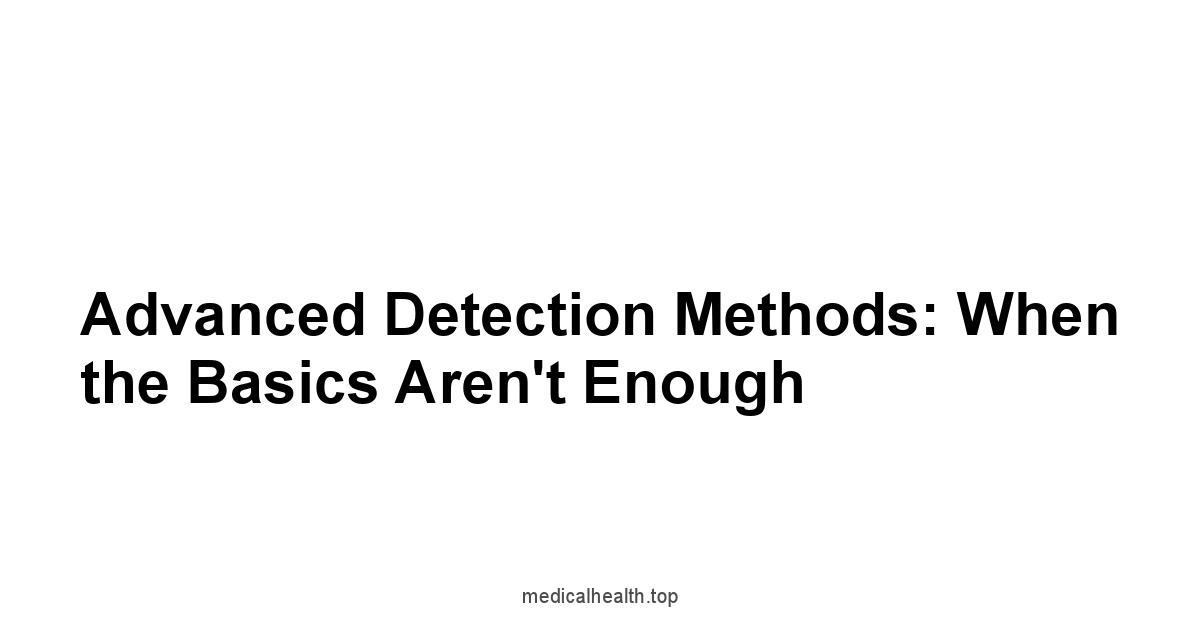
Sometimes the basics aren’t enough, like when the weather needs more than a barometer to tell the storms.
When basic tests aren’t clear, when there are risk factors or symptoms that need closer inspection, doctors use advanced methods.
These tests, they are more like a into your heart, to look at it in detail, not from a distance.
Stress tests, echocardiograms, cardiac CT, MRI, genetic testing, they are all tools for a more detailed look, to understand what’s going on, or what might be coming.
It’s about getting the full picture, not just a small piece.
It’s like having a good map, not just a simple compass.
Stress Tests: Pushing Your Heart to its Limits
Stress tests, they push your heart, but under controlled conditions.
It’s like putting the car on a test track, to see how it handles under pressure.
It’s usually done on a treadmill or stationary bike, while your heart is monitored, recording the electrical activity, your blood pressure, and any symptoms, like chest pain or shortness of breath.
The goal is to see how your heart reacts to exercise and to detect any signs of trouble.
Some stress tests may also involve medications that stimulate the heart, as if you were exercising.
It’s useful when the patient cannot exercise properly.
They are looking for signs of coronary artery disease, or for electrical problems that might not show up at rest.
It’s about pushing the heart, to see if it will show its weakness.
It’s a valuable tool, like a stress test for the heart.
- How Stress Tests Work:
- Exercise treadmill or stationary bike while monitoring heart rate, rhythm, and blood pressure.
- Sometimes, medications are used to simulate exercise.
- What Stress Tests Detect:
- Coronary artery disease CAD by checking blood flow to the heart.
- Heart rhythm abnormalities during stress.
- Types of Stress Tests:
- Exercise Stress Test: Standard treadmill or bike.
- Pharmacological Stress Test: Uses medication to simulate exercise.
| Test Type | Method | What It Detects |
|---|---|---|
| Exercise Stress Test | Patient exercises on a treadmill or bike while heart is monitored. | Coronary Artery Disease, heart rhythm problems during exercise |
| Pharmacological Stress Test | Medication is used to stimulate the heart as if the patient is exercising | Coronary Artery Disease, heart rhythm issues when patient can’t do regular exercise |
Echocardiograms: Seeing Your Heart in Action
Echocardiograms, they use sound waves to create images of your heart. It’s like having a video camera inside your chest.
These images show the heart’s structure, its size, its valves, how well it’s pumping, and the blood flow.
It’s not an X-ray, there’s no radiation, just sound waves.
It can detect heart valve problems, heart muscle weakness, and other structural issues, things the EKG may not see.
It can also show if the heart is enlarged, if there are clots, or fluid build up in the heart, or around it.
It’s like a detailed inspection of the heart mechanics. It’s a window into your heart’s inner workings. It is a safe and valuable diagnostic test.
- How Echocardiograms Work:
- Uses sound waves to create images of the heart.
- Heart valve problems.
- Heart muscle weakness.
- Structural abnormalities.
- Blood flow abnormalities.
- Types of Echocardiograms:
- Transthoracic Echocardiogram TTE: Standard method, performed on the chest wall.
- Transesophageal Echocardiogram TEE: A small probe is placed down the esophagus for a better view of the heart, it is performed when more clarity is needed.
| Echocardiogram Type | Method | What It Shows |
|---|---|---|
| Transthoracic Echo | Ultrasound transducer placed on the chest, non invasive | Structure of heart, heart pumping function, valve function, blood flow standard method |
| Transesophageal Echo | Ultrasound transducer on a probe inserted into the esophagus, more invasive but provides better detail. | Clear images of the heart, especially valves, and abnormalities when the normal method is not enough. |
Cardiac CT and MRI: Detailed Imaging of the Heart
Cardiac CT and MRI, they’re like sophisticated cameras, giving detailed pictures of your heart.
CT scans use X-rays and a computer to create cross-sectional images of the heart, showing the arteries and calcium deposits. MRI uses magnetic fields and radio waves
What do we think?
In the end, understanding heart disease is about taking control of your own story.
It’s about recognizing the enemy, knowing its faces, and understanding how it attacks.
The data tells a clear story: heart disease is a leading cause of death globally, but many of its risk factors are within our power to change.
The World Health Organization WHO reports that nearly 17.9 million people die each year from cardiovascular diseases, but these numbers are not inevitable.
By embracing a heart-healthy lifestyle and being proactive about our health, we write a different ending.
The choices we make daily, the food we eat, how much we move, if we smoke, these are not small things, they are the building blocks of our health.
The American Heart Association emphasizes that a heart-healthy lifestyle, which includes a balanced diet, regular physical activity, and avoiding tobacco, can reduce the risk of heart disease by 80%. We can control the narrative, we can decide, we have the power to make changes and create a better outcome.
It’s not about perfection but progress, about continuous improvement.
Regular checkups, knowing your numbers, these are crucial steps.
They provide vital information, a look behind the curtains, so to speak.
The CDC reports that about 47% of adults in the United States have at least one of the three main risk factors for heart disease: high blood pressure, high cholesterol, and smoking.
Being aware of these numbers, and making the effort to keep them in a healthy range, it is key.
It’s about being informed, so we can make smart decisions.
Early detection is not just about finding problems, it is about acting before those problems become severe.
The path to a healthier heart is not a lonely one, it’s a road we walk together.
It’s about being informed, being proactive, and making choices that support heart health.
It’s not just about avoiding illness, it’s about living well, with energy and vitality.
The information, tests, and the tools are there, and the power to act is in each one of us.
By understanding the enemy, we become our own best defense. We can change the ending, we just have to start.
Frequently Asked Questions
What exactly is heart disease?
Heart disease, it’s a term that covers many conditions, not just one thing.
It’s about the heart not working right, in various ways.
We’re talking about the heart’s plumbing, its pumping, and its rhythm. Knowing this is the first step in fighting it.
What are the main types of heart disease?
You’ve got the Coronary Artery Disease, where the arteries get clogged, like rust in a pipe.
Then there’s Heart Failure, where the heart can’t pump blood strong enough.
And Arrhythmias, that’s when the heart rhythm goes haywire, either too fast, too slow, or irregular. These are the big three that cause trouble.
How does heart disease mess with the body?
It’s a mechanical problem, plain and simple. Blood needs to flow smooth, bringing oxygen.
When things go wrong, with CAD, the arteries are too narrow, the heart cries for oxygen.
With heart failure, the pump’s weak, not pushing the blood.
And with Arrhythmias, it’s like faulty wiring, not beating the right rhythm, all causing chaos in the body.
Who is more likely to get heart disease?
Age and family history are the cards you’re dealt, you can’t change those.
But then there are the things you can control, like high blood pressure, smoking, high cholesterol, being overweight, having diabetes, and not moving enough.
It’s the bad habits that stack the odds against you. It’s about taking charge and changing the course.
What role does lifestyle play in preventing heart disease?
Lifestyle is everything, the first line of defense.
It’s about the food you eat, the exercise you do, if you smoke, how you manage stress.
These are your daily battles, where you can win or lose.
It’s not about grand gestures, but small consistent actions. It’s up to you to take control of these things.
What should I eat to keep my heart healthy?
Eat the right fuel, like putting premium in a car.
You’re looking for balance with fruits and vegetables, whole grains, lean proteins, healthy fats.
Avoid the bad stuff, the processed foods loaded with salt, sugar and bad fats. It’s not a diet, it’s a way of living.
How much exercise do I need?
You need to move, consistently.
At least 150 minutes of moderate exercise a week, that’s about 30 minutes most days.
It’s not about going crazy, but just moving, walking, jogging, swimming, cycling, do what you like and do it consistently. Add some strength training a few times a week too. It’s medicine for your heart.
Why is quitting smoking so important?
Smoking is like throwing gasoline on a fire.
It damages your blood vessels, makes them narrow, and increases the risk of heart problems.
There’s no safe amount, just stop, that’s the non-negotiable.
It’s the best thing you can do for your health, quit now and do not start if you have not yet started.
How does stress affect my heart?
Stress, the daily grind, can be a silent killer.
It raises blood pressure, makes the heart work harder, and increases the risk of heart problems.
Find a way to manage it, meditation, deep breathing, exercise, connection, find your peace in the chaos, it’s important for your health.
How does alcohol play a role in heart health?
Like many things, it’s not all good or bad, moderate drinking, like one drink a day for women and up to two for men, might have some protective benefits for the heart, but too much does the opposite, raising blood pressure and more heart issues.
So if you drink, keep it moderate, if not, don’t start.
Why are regular checkups so important?
Knowing your numbers is knowing the enemy.
Blood pressure, cholesterol, blood sugar, these are important, like checking the oil in a car. Don’t wait for the symptoms. Be proactive, and catch problems early.
What’s a good blood pressure reading?
120/80 mmHg, that’s the ideal.
High blood pressure is anything consistently higher than 130/80 mmHg, you need to keep it under control, that’s the key.
What about cholesterol, the good and the bad?
LDL is the bad kind, it clogs the arteries, HDL is the good kind, that cleans the arteries. You need the right balance. Total cholesterol should be less than 200 mg/dL. Regular checks will keep you informed.
Why should I worry about my blood sugar?
High blood sugar leads to diabetes, it damages your blood vessels, which in turn can lead to heart problems.
A fasting blood sugar less than 100 mg/dL is normal, if it is over 126 mg/dL in two separate tests you have diabetes, it’s important to keep it in check.
What’s an EKG and what does it show?
An EKG, it’s a picture of the heart’s electrical activity.
It can detect irregular heartbeats, rhythm problems, and any electrical trouble in the heart.
It’s like listening to the heart’s podcast, seeing any strange beats.
Why should I get regular physical exams?
Regular physical exams are the map to your overall health, your doctor will check your blood pressure, heart, weight, and look for warnings.
It’s not just when you’re sick, but also for prevention, catching things early.
When do I need more advanced tests?
When the basics aren’t enough, when there are risk factors or symptoms that need a closer look.
Stress tests, echocardiograms, CT scans, MRI, these are advanced methods, that give more detailed information, like a map not just a compass.
What are stress tests and what do they do?
Stress tests, they push the heart under controlled conditions, on a treadmill or with medication.
It sees how your heart reacts to the stress, revealing any artery problems and rhythm issues.
What is an echocardiogram?
An echocardiogram, it’s a video camera in your chest, using sound waves to see the heart, its valves, its pumping, all of its structures.
It’s a detailed view of the heart’s structure and how it works.
What’s the deal with cardiac CT and MRI?
They’re sophisticated cameras that take detailed pictures of the heart.
CT scans use X-rays to see the arteries, and MRI uses magnetic fields to create images.
They give a more thorough picture of what’s going on.
